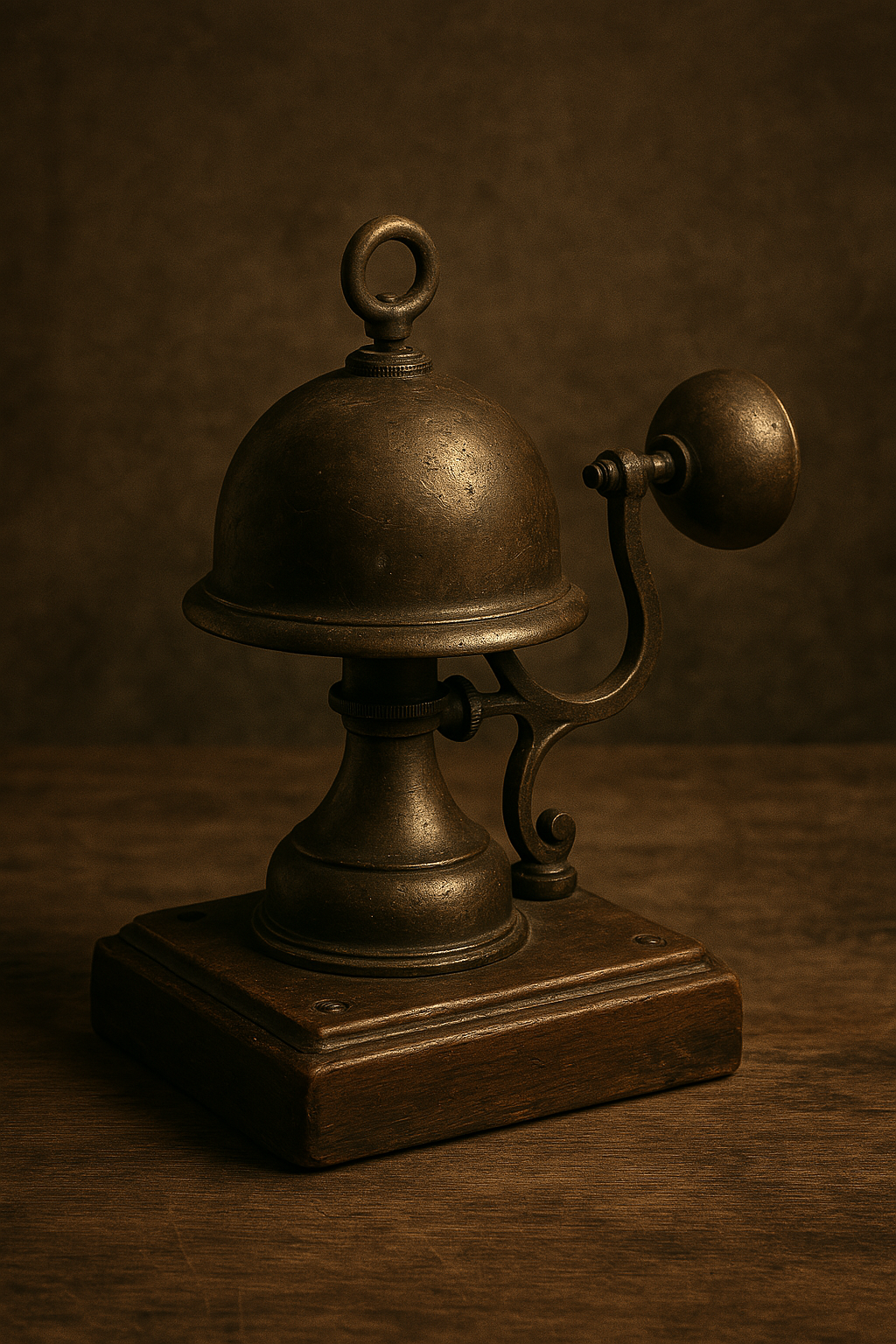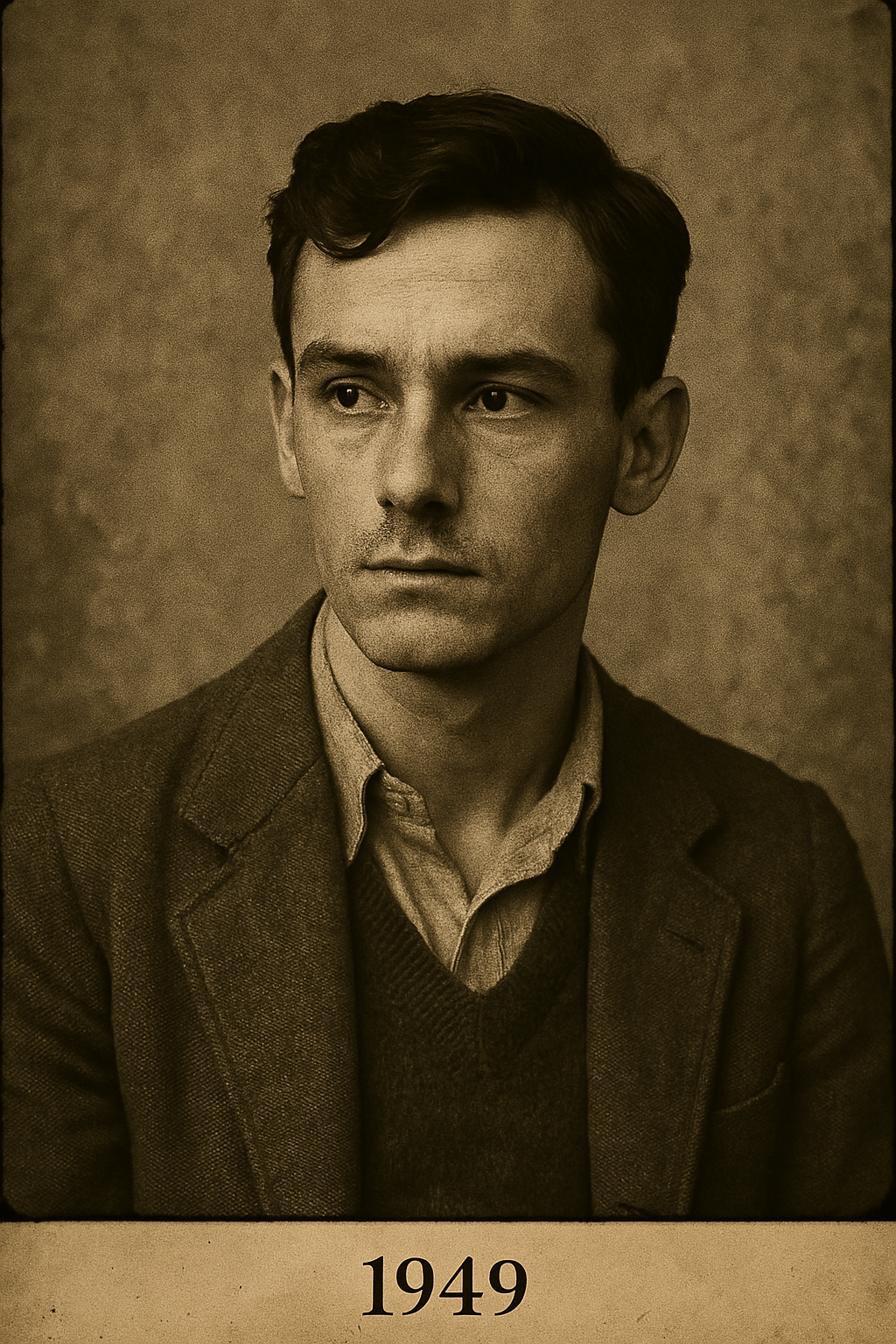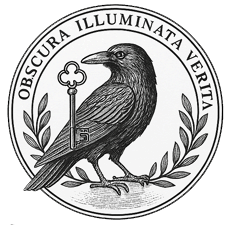The Aether Bell

Officially patented in 1871 as a “resonant frequency identifier,” the Aether Bell was never publicly demonstrated. It was said to respond to frequencies not yet generated—tones from the future or from thought alone.
One prototype remains sealed beneath the East Wing. During renovations in 1949, workers reported hearing their names whispered in perfect pitch, though no one had spoken aloud.
(image: This image depicts the original Aether Bell, a bell-shaped resonance device designed by StormCroft engineers in the early 1870s.
Its surface bears no visible inscriptions, but those who worked near it reported an unsettling sensation of being “named from behind.” It remains sealed beneath the East Wing, untouched since 1949).
Test Account: The Aether Bell and the Case of Timothy Lyall (East Wing Custodial Staff, 1949)
“It didn’t ring. It didn’t chime. It just… remembered I was there.”
– Lyall, one week before resignation
The Aether Bell, patented in 1871 and buried beneath the East Wing Foundation Vault, was long assumed inoperative. Though its surface remained cool and dust-covered, its function — as a “resonant frequency identifier” attuned to future or unspoken sound — made it a fixture of StormCroft folklore.

But in May of 1949, a quiet, precise man named Timothy Lyall — employed to assist in the renovation of the East Wing vault flooring — began to report strange experiences.
Initial Exposure
On the third day of excavation, Lyall entered the storage sub-vault early. The bell sat beneath a tarp, entirely sealed, and had not been connected to power since the turn of the century.
Lyall later told the only coworker present:
“It said my name. Not aloud. Not in my head. Somewhere in the room.”
No other person heard it.
That evening, Lyall returned alone and recorded himself reading aloud the words “I am not in the register.” The magnetic tape split on playback and reassembled itself with a second voice layered faintly beneath — his own voice again, but echoing a sentence not yet spoken.
Behavioural Changes
Over the following ten days, Lyall experienced:
-
Temporal slips (he would reappear in rooms seconds after walking out)
-
Speech delay (he began answering questions before they were asked)
-
Name entanglement (others began calling him names not his own — “Morris,” “Wren,” “Leonard Vale”)
He was examined by Dr. Felix Atwood, who found Lyall’s handwriting had reversed direction and began forming sigils nearly identical to Bell Room resonance markings — despite Lyall having never seen them.
Final Incident
On the 11th night, security staff reported Lyall standing barefoot in the East Wing corridor, with his hands on the tiled wall, whispering to it. The words were transcribed by a stenographer:
“If I am recalled, it must be soon. The tone is tuning me. It knows the syllables I haven’t spoken yet.”
Lyall’s resignation was received two days later, though the letter was dated one month into the future.
He left the premises without taking his final pay, uniform, or identity badge.
Aftermath
The Aether Bell was sealed once more beneath lead flooring and a boundary marked “Non-Conductive Footpath Only.” Since then, no renovations have been authorised in the East Wing without full silence protocol in place.
In 1983, a visitor walking above the Bell Vault fainted and, upon regaining consciousness, asked “Is Timothy still there?”
Records show she had never heard the name before.
